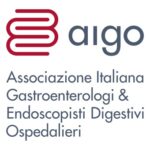
Do not abuse of periprocedural and intraprocedural medication and prefer their use only when strictly indicated (e.g. avoid inadequate antibiotic prophylaxis and saline fluid intravenous solution)
The environmental burden of medications before endoscopy (bowel preparation and laxatives for colonoscopy, or mucolytic solutions), during (sedatives, antibiotics, or analgesics), and after the procedure has not been formally quantified but it has recently been estimated the 1 g medication has a high CO2 footprint of somewhere between 10 g and 1000 g. The use of medication is recommended only when strictly indicated and supported by guidelines; moderate versus deep sedation versus endotracheal intubation, and selective versus routinary involvement of an anhestesiologist may also influence the carbon footprint. Patients and citizens have to be informed and involved in these decisions.
Sources
1. Enrique Rodríguez de Santiago E, Dinis-Ribeiro M, Pohl H et al. Reducing the environmental footprint of gastrointestinal endoscopy: European Society of Gastrointestinal Endoscopy (ESGE) and European Society of Gastroenterology and Endoscopy Nurses and Associates (ESGENA) Position Statement. Endoscopy 2022; 54: 797–826.
2. Richie C. Environmental sustainability and the carbon emissions of pharmaceuticals. J Med Ethics 2021: doi:10.1136/medethics-2020-106842
Download
PDFAttention. Please note that these items are provided only for information and are not intended as a substitute for consultation with a clinician. Patients with any specific questions about the items on this list or their individual situation should consult their clinician.


Recent Comments